Our History

3000 years +
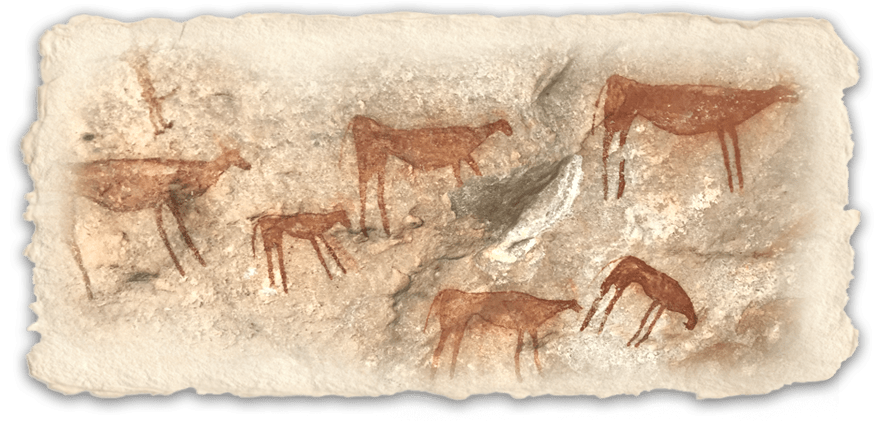 The first inhabitants are the San hunter gatherers who are semi-nomadic moving seasonally depending on water, game, and edible plants. The Boesmans Rivier name and rock paintings and tools in Banghoek attest to their presence in the valley.
The first inhabitants are the San hunter gatherers who are semi-nomadic moving seasonally depending on water, game, and edible plants. The Boesmans Rivier name and rock paintings and tools in Banghoek attest to their presence in the valley.
c.1300-c.1500
The Khoisan are established as the dominant power. They are proud herdsmen and are to clash fiercely for grazing ground with the ever-expanding European settlers in the 17th and 18th century. The VOC provided a “veldwachtmeester” to protect the Banghoek (Boschkloof) “leningplaats” – see below history 1871.
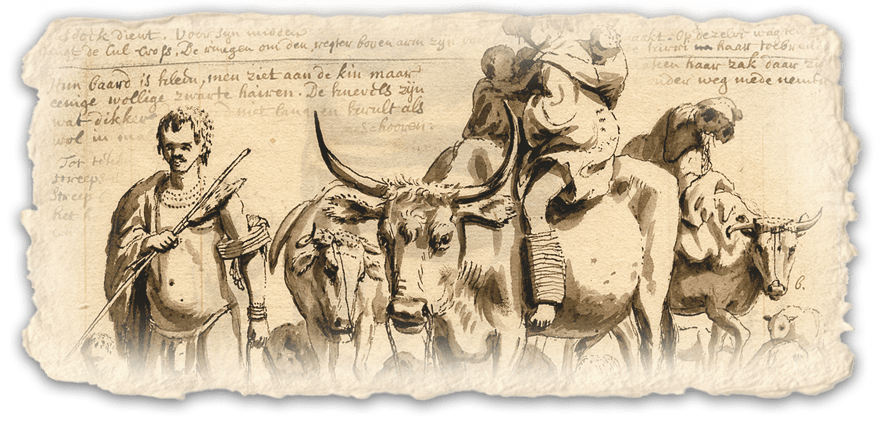

late 1600's
The Piketberg area is recorded as a hunting concession granted to Willem Adriaan van der Stel (1644 – 1733) who was the Governor of the Cape Colony 1699 – 1707. He was dismissed after a revolt led by Adam Tas.
1723
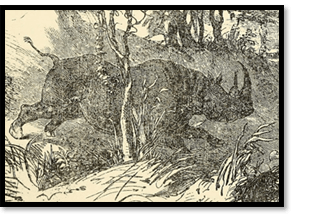 Francois Valentyn, a VOC army chaplain was passing through the Cape on his way home to the Netherlands from Java in 1723. He gives this account of the drama that overtook the party as it trekked along in file “near the bulk of the mountain. As we rounded a ‘hoek’* an unbelievably large rhinoceros appeared, coming with great fury and viciousness straight for the centre of our column and from there running along to the rear where His Excellency** was in his coach. It made directly for this…
Francois Valentyn, a VOC army chaplain was passing through the Cape on his way home to the Netherlands from Java in 1723. He gives this account of the drama that overtook the party as it trekked along in file “near the bulk of the mountain. As we rounded a ‘hoek’* an unbelievably large rhinoceros appeared, coming with great fury and viciousness straight for the centre of our column and from there running along to the rear where His Excellency** was in his coach. It made directly for this…
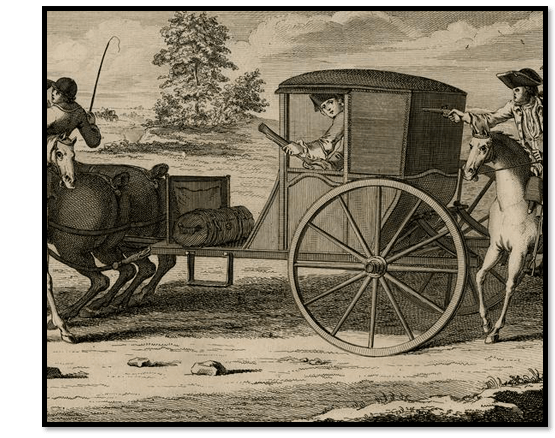
His Excellency, having barely time enough to get out from the coach, leaping out with a blunderbuss in his hand and aiming this at the beast which was not six paces distant from him; and he intended to fire but the blunderbuss misfired, the rear catch striking the forward one. We expected nothing else but that the furious beast would devour His Excellency before our eyes, but it ran past him, brushing against his body. We believe that this was due to the shot that one of His Excellency’s hunters fired at it whereat it ran from us at great speed. Several others who were on horseback were unable to avoid it, falling from their mounts in great fright, where they wounded themselves in many places. The rhinoceros, by its sudden ill-tempered attack and its apparent short-sightedness, must have been a black rhinoceros. It ran away at speed followed by a hail of musket balls which it survived.”
*Note: Looking at the Banghoek Road it is possible that the blind bend at Dassiesklip, where the road curves sharply to the left up the kloof, is the most likely spot for this incident.
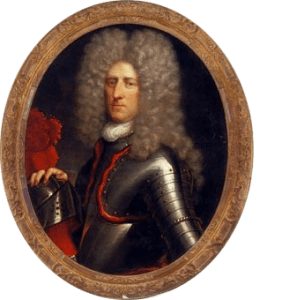 **Valentyn does not give the name of His Excellency, but the Governor of the Cape 1714 -1724 was Maurits Pasques de Chavonnes (1654-1724) – who would have been 69 at the time. He died in September 1724 at the Cape after a one-day illness and is buried in the Groote Kerk.
**Valentyn does not give the name of His Excellency, but the Governor of the Cape 1714 -1724 was Maurits Pasques de Chavonnes (1654-1724) – who would have been 69 at the time. He died in September 1724 at the Cape after a one-day illness and is buried in the Groote Kerk.
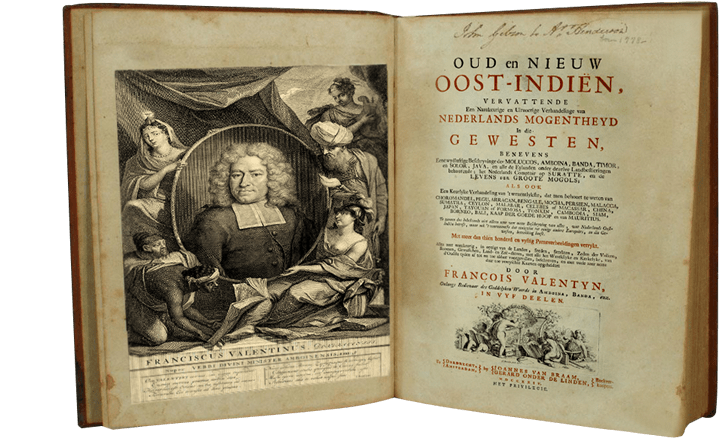
***Francois Valentyn returned to Dordrect where he worked on his opus; Oud en Nieuw Oost-Indiën (1724–26), a massive work documenting the history of the VOC in the East Indies; eight volumes, over one thousand engraved illustrations, and some of the most accurate maps of the time. He is cited (Beekman) for his writing style, diction and aptitude for narrative, as one of the greatest Dutch prose writers of the 18th Century. He died in The Hague, 1727.
1745
Twenty years on, in November, Johannes Starrenburg had a brief experience with an inquisitive rhinoceros on the eastern flank of the Piketberg, about 15 km north of the present town. “During the night a rhinoceros came close to the tent, snuffling around the wagons, but on our making up a fire to a blaze, it went way…” And six weeks prior when near Wolweberg in the north-western corner of the Piketberg district towards Elands Baai… “a rhinoceros stood in our path only about 100 paces from the track, which we feared would throw us into disorder, but it went off up the hill at the shouts of the Hottentots”.
We know by these accounts, and also from paintings of the era, that the valley was a corridor for many wild animals including rhino, elephant and numerous types of antelope. Other books written about the West Coast around that time, also refer to the prolific game, specifically rhino.
What a pity that it has all disappeared. Let us make sure that what is left of our flora and fauna remains for future generations.
15 March 1781
Boschkloof is granted as a ‘Loan Place’ for ‘only one year’ to Johannes Lubbe.
“Loan Places” (Leningplaats) differed from the original “land grants” which were free-hold farms granted to private farmers (Free Burghers) from 1657 onwards to stimulate food production. However, as the colony grew, farmers, to avoid paying taxes, were farming outside their farm boundaries and the spread continued outwards from the Cape area.
To bring the tax avoiders back into the fold, Loan places were declared. Loan farm claims were usufruct* rights defined by a single point, a beacon or shelter with each farm specified as an hours walk from the beacon – no more than 6000 acres. The centre and dimensions of the circular claim were self-defined by the holder provided “he not be a bother to someone already farming there”. Any land squatter could therefore become “legal” by approaching the government and laying a claim – there is no record that any claim was denied. [Note: It would be interesting to stand at the Banghoek farmhouse and walk one hour in each direction to see where the original boundary would have been. If a Banghoekian would like to do this, please inform your Trustees so that we could add this to our body of knowledge].
Loan farm licenses allowed cultivation of wheat and other cereals which were taxed a 10% tithe. This bears out in the Poortermans paintings from 1849 of the Piketberg farms. There is no indication of large-scale cattle farming, that lucrative trading product of choice of farms nearer the Cape Trading post. One would assume that transporting cattle for 3-5 days to The Cape would have been prohibitive.
In return for the 10% tithe the farmers were protected by a “veldwachtmeester” domiciled in the area who could organise an armed militia from local farmers in the event of a Khoi attack. Khoi attacks decreased dramatically in only a few years due to a simple, brutal method. The militia killed the men and took the women and children as workers. Look closely at the Poortermans painting of Banghoek in 1849 ; in the foreground is a Khoi (Hottentot) woman with two children.
*A usufruct is a legal right accorded to a person or party that confers the temporary right to use and derive income or benefit from someone else’s property – in this case the property of the Banghoek land being owned by the VOC Company.

15 June 1821
Now named Boskloof, the land is granted to Johannes Henricus Fischer, son of Pieter Ulrich Fischer of Klein Bottelary as a quitrent. It consists of two pieces of land, together over 1 400 morgen. Quitrent, is a sort of buy-back tax imposed on owners of land in lieu of services to the VOC who “owned’’ the land. It allowed the “full enjoyment” of the land and freed the owner from the burdensome obligation of services to the VOC e.g. hunting rights which could have hindered farming extension. The existing farmhouse was erected by Fischer, in or about 1821 and over the years it has seen several additions and alternations but much of the original building remains. “The Banghoek Farmhouse is the only one in the Kapteinskloof consisting of more than just a single row of rooms. It is TT-shaped and has four half-shaped ends (one of them was replaced by a gable) there is no front gable. The two back wings are close together, and the narrow passage in between has been given a flat roof and now provides access to the back rooms, an alteration that makes the house more livable and does not seriously spoil its character. Internally, too, the house has been altered, but the old ceilings remain throughout, with squared beams in front and round beams in the back wings and the side rooms. There arere some modernized outbuildings.”
1800s
Banghoek serves as an ox-wagon stopover with a blacksmith, water mill and schoolhouse with 60 pupils.
1832
Jan Nicolaas Smit becomes the owner. The Smit family are a very successful farming family in the Sandveld area from the 1730’s onwards.
1848 - 1849
The painter Johannes Cornelius Poortermans visits the valley for and “spends two years in this healthy region”. He paints Banghoek and other Kapteinskloof farms a “record of the vernacular architecture of an era which probably has no parallel anywhere else in the country” ref James Walton. His painting in the Africana Museum, Johnnesburg is entitled “The Estate Banghoek, situated in the Piquet Mountains. Proprietor I Smit Esq 1849” and shows the farmhouse, wagon and oxen on the road and cultivated fields where the orange groves are today.
15 December 1859
Jan Smit dies. Banghoek is bought by his son-in-law, Dirk Jacobus Kotze, who had married Madge Maria Smit. On his death it passes to Jacobus’ two daughters who married into the Burger family who still farm the valley to this day.

Early 1900s
The kloof is a small settlement with 200 inhabitants, a shop, school and post-office. The area is still a strong hunting area full of game; over 30 000 zebra skins are shipped to England from Kapteinskloof for use as floor sacks.
Circa 1910. In 1991, an 83 year old woman in the valley tells us that she remembers when she was young “die wage wat so daar oor die kloof gekom het, by Patatdraai, en dan kamp hulle onder die groot bome.” These two trees are still there – shady bush yellowwoods on the crest of the hill. They were badly burned in the 2021 fire, we hope they will recover, they are part of our history. The same woman told us of a “grave” that was on the down route off the main road; photographed here, but we have no evidence that indeed there is someone buried there. It is interesting to note that Banghoek does not have a graveyard – why not? In the early 2000s we had to get permission to have Adolf Oktober (Fokkie) who was a worker on the farm to be buried on a neighbour’s farm – Perdekraal.
1991
Bobby Hack buys two portions of farms from the Burger family for R750 000. “Portion 1 of The Farm Banghoek no 87 and Portion 2 (Matjesfontein) of the Farm ‘t Voetpad no 82, Piketberg”. He registers it as Banghoek Private Game Reserve no 5597/91. Bobby is financed by Desatron (Pty) Ltd, the developer; a division of Rane Corporation (Pty) Ltd. A Body Corporate is registered on 16th May 1991. Cost for a unit including house built and complete and circa 2 hectares exclusive use is R120 000 and the levies are R40 pm. “Bobby’s sales method is to invite you to drive up early evening from Cape Town and stay overnight at the farmhouse with his wife, Linda, and two little girls. And then in the morning after a good breakfast, he drives you around this beautiful valley, standing like a joyful child on the back of his bakkie. It is love at first sight and a R1000 deposit clinches the deal. ref Colleen Backstrom 1991
At this stage, although there are farm roads, the roads to the homes do not exist – they are made by a tractor towing along a large tractor tire to flatten the fynbos – up and down to tamp down the sand – and so the famous “roads” of Banghoek are born.
Water is from a weir just under the edge of the kloof on the south-eastern border, courtesy of our neighbour on the ridge, his overflow water. The whole system is run on gravity through pipes laid just under the soil (except where they run over rocks) – easy to spot wet spots and fix leaks. All Banghoekians know how to walk-the-waterpipe with pliers in hand.
The first few years go well, Bobby generally selling one unit every few months. “We are an excited little group, happy to be custodians of this special valley with great plans for conservation and starting our “game” farm. There is no wifi, no cell phone reception. The isolation is blissful, the lamplit evenings beautiful. Bobby comes up on an old horse early evening to check that everything is ok; he ties up his horse to the stoep banister, wild west movie style.”
In April 1993 Chris Hani is shot and South Africa plunges into turmoil. Sales virtually stop and remain uphill; finances stretch further. Bobby and family leave the valley. And Rane (as Desatron) takes over as developer. Footnote: After the 2002 fire Desatron is placed into liquidation and Cape Character Products CC buys the remaining developer’s units on auction.
1996
A team from the Protea Atlas Project does a survey of the reserve and provides a list of our Proteaceae species. They find two rare proteas, one only recently discovered and one yet unnamed. We suggest banghoekeii… but it becomes Serruria pikertbergi and then Piketberg Spiderhead Serruria ‘piketbergensis’.
We register Banghoek as a Private Nature Reserve to protect it from further development. The conservation board loses the application and we re-apply.

2001
Driven by the efforts of Banghoekian Countess Labia we are at last granted Private Nature Reserve status (as per the naming on google maps) by the Western Cape Nature Conservation Board and we receive our letter and certificate which is signed by GN Morkel Premier Provincial Administration, Western Cape, 19th September 2001.
21 February 2003
The great fire of Banghoek starts on the farm (the burning of farm rubbish). It takes 4 hours for the fire department to be notified. At this stage the fire is out of control. Fanned by strong south-easterly winds it sweeps up the valley and burns down 24 units and the water system.
The fire is so hot that it melts glass; glass melts at 1400 °C. The fire is devastating and only two owners rebuild, Backstrom in June 2003 and then a few years later Perrin. A few plots are sold off.
2005
A new water system is in place. Water from two boreholes is pumped to strategically placed holding tanks which gravity feed to the homesteads.
2006 - 2018
Banghoek is in a hiatus. Together with the global 2008 – 2012 recession and the country’s political woes during the Zuma years, confidence is low, and sales are slow. However, the beauty of the fynbos stays unhindered and it’s a wild and beautiful place to be; the 2003 fire having created the blossoming of flowers and plants not seen before in Banghoek.
2020 - 2022
Renaissance. New life and new spirit come to the valley with new energy and new owners. Banghoek starts growing and flourishing again. During the Covid years it is a much loved escape into the clean fresh air of Nature for Banghoekians.